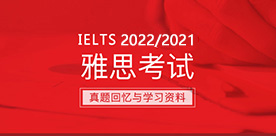雅思剑4Test4阅读Passage3翻译-稀缺资源的问题
2017/5/11 14:12:49来源:新航道作者:新航道
摘要: 在备考雅思阅读的部分中会遇到不懂的句子或单词,为了帮助大家更好的了解雅思阅读文章的意思,上海新航道学校雅思老师给考生们带了雅思剑4Test4Passage3阅读原文译文-The Problem of Scarce Resources,希望可以帮助广大雅思考生轻松备考雅思。
在备考雅思阅读的部分中会遇到不懂的句子或单词,为了帮助大家更好的了解雅思阅读文章的意思,上海新航道学校雅思老师给考生们带了雅思剑4Test4Passage3阅读原文译文-The Problem of Scarce Resources,希望可以帮助广大雅思考生轻松备考雅思。
The Problem of Scarce Resources-稀缺资源的问题
The problem of how health-care resources should be allocated or apportioned, so that they are distributed in both the most just and most efficient way, is not a new one. Every health system in an economically developed society is faced with the need to decide (either formally or informally) what proportion of the community’s total resources should be spent on health-care; how resources are to be apportioned; what diseases and disabilities and which forms of treatment are to be given priority; which members of the community are to be given special consideration in respect of their health needs; and which forms of treatment are the most cost-effective.
卫生保健资源应该如何分配或指定以保证它们能以最公平、最有效的方式分布,这个问题已经不算新了。在经济发达的社会,每一个卫生系统都需要做出决定(正式或非正式):在卫生保健方面投入资源应占社会全部资源的多大比例?这些资源应该如何分配?什么样的疾病和残疾以及什么形式的治疗应该享有优先权?社会中的哪部分成员应该在卫生需求方面给予特别关照?什么形式的治疗是最节省成本的?
What is new is that, from the 1950s onwards, there have been certain general changes in outlook about the finitude of resources as a whole and of health-care resources in particular, as well as more specific changes regarding the clientele of health-care resources and the cost to the community of those resources. Thus, in the 1950s and 1960s, there emerged an awareness in Western societies that resources for the provision of fossil fuel energy were finite and exhaustible and that the capacity of nature or the environment to sustain economic development and population was also finite. In other words, we became aware of the obvious fact that there were ‘limits to growth’. The new consciousness that there were also severe limits to health-care resources was part of this general revelation of the obvious. Looking back, it now seems quite incredible that in the national health systems that emerged in many countries in the years immediately after the 1939-45 World War, it was assumed without question that all the basic health needs of any community could be satisfied, at least in principle; the ‘invisible hand’ of economic progress would provide.
新近的发展是,自20世纪50年代以来,人们看待资源有限性及卫生资源有限性的态度都有了总体的改变,另外关于使用卫生资源的用户和社区所需做出的开支方面也有了具体的变化。在20世纪50年代和60年代,西方社会意识到:化石燃料能源的供应资源是有限的,并能被耗尽,自然界或环境维持经济发展和人口增长的能力也是有限的。换句话说,我们开始意识到一个显而易见的事实,就是增长是有限制的。卫生保健资源同样也会有一些限制的新观念就是这个显而易见的亊实的一部分。回溯起来,有一个观点现在看来不可思议:在1939年到1945年的世界大战结束后的几年内,很多国家建立了国民卫生体系,人们认为这样的国民卫生体系至少在理论上能够满足任何人群的所有基础卫生需求,经济增长中“看不见的手”将提供一切所需。
However, at exactly the same time as this new realisation of the finite character of health-care resources was sinking in, an awareness of a contrary kind was developing in Western societies: that people have a basic right to health-care as a necessary condition of a proper human life. Like education, political and legal processes and institutions, public order, communication, transport and money supply, health-care came to be seen as one of the fundamental social facilities necessary for people to exercise their other rights as autonomous human beings. People are not in a position to exercise personal liberty and to be self-determining if they are poverty-stricken, or deprived of basic education, or do not live within a context of law and order. In the same way, basic health-care is a condition of the exercise of autonomy.
然而,就在这种认为卫生资源是有限的新思想销声匿迹的同时,一种相反的思想在西方社会发展起来了。这种思想认为享受卫生保健是人们的一项基本权利,而这种权利是人们正常生活的必要条件。像教育、政治程序、法律程序、机构、公共秩序、沟通、交通和金钱供给一样,卫生保健被看作是人们行使作为自治人类的权利的必需的一项基本社会的设施。如果为贫穷而苦恼,或者被剥夺了基础教育,或者没有生活在法律法规的框架下,那么人们就不能拥有个人自由,自主行事。同样,基础卫生保健也是人实现自由的一个条件。
Although the language of ‘rights’ sometimes leads to confusion, by the late 1970s it was recognised in most societies that people have a right to health-care (though there has been considerable resistance in the United States to the idea that there is a formal right to health-care). It is also accepted that this right generates an obligation or duty for the state to ensure that adequate health-care resources are provided out of the public purse. The state has no obligation to provide a health-care system itself, but to ensure that such a system is provided. Put another way, basic health-care is now recognised as a ‘public good’, rather than a ‘private good’ that one is expected to buy for oneself. As the 1976 declaration of the World Health Organisation put it: ‘The enjoyment of the highest attainable standard of health is one of the fundamental rights of every human being without distinction of race, religion, political belief, economic or social condition.’ As has just been remarked, in a liberal society basic health is seen as one of the indispensable conditions for the exercise of personal autonomy.
虽然权利这个词有时在语言上会混淆,但是到20世纪70年代晚期,大多数社会都承认人们有享受卫生保健的权利(虽然在美国,人们享有卫生保健的正式权利这一观点受到了相当大的抵触)。还有一个观点也是被普遍接受的:这种权利使得国家有义务有责任确保从公共预算中划拨足够的资金提供卫生服务。国家本身没有义务去建立卫生健康体系,但是有义务去保证这样一个体系的存在。换句话说,基础卫生保健是一种公共产品,而不是需要花钱去购买的私人产品。世界卫生组织在1976年的宣言中写道;“享受可能达到的最髙标准的健康是每一个人的基本权利,不因种族、宗教、政治信仰、经济或社会情境而异。”正如刚才所提到的,在一个自由的社会,基础卫生是行使个人自治的一个必不可少的条件。
Just at the time when it became obvious that health-care resources could not possibly meet the demands being made upon them, people were demanding that their fundamental right to health-care be satisfied by the state. The second set of more specific changes that have led to the present concern about the distribution of health-care resources stems from the dramatic rise in health costs in most OECD1 countries, accompanied by large-scale demographic and social changes which have meant, to take one example, that elderly people are now major (and relatively very expensive) consumers of health-care resources. Thus in OECD countries as a whole, health costs increased from 3.8% of GDP2 in 1960 to 7% of GDP in 1980, and it has been predicted that the proportion of health costs to GDP will continue to increase. (In the US the current figure is about 12% of GDP, and in Australia about 7.8% of GDP.)
当卫生保健资源不能满足需求的这一现象比较明显的时候,人们要求国家满足他们享有卫生保健的这一基本权利。大规模的人口数量及社会的变化导致大多数经济合作发展组织的国家的卫生费用急剧增加,这再一次引发了一系列改变,使人们开始关注医疗卫生资源的分配问题。例如,老年人现在是最主要的(相对来说也是最昂贵的)卫生健康资源消费者。在欧共体总体中,健康资源的消费从I960年占GDP的3.8%到1980年的7%,而且这一增长趋势将会持续。(在美国,目前的数字是占GDP的12%,澳大利亚是7.8%)。
As a consequence, during the 1980s a kind of doomsday scenario (analogous to similar doomsday extrapolations about energy needs and fossil fuels or about population increases) was projected by health administrators, economists and politicians. In this scenario, ever-rising health costs were matched against static or declining resources.
结果,在20世纪80年代在各国卫生部长、经济学家和政治家身中都出现了一股极度的悲观情绪(和以往人们的悲观推测类似,比如关于能源需求和燃料问题,或是人口增长问题)在这样的论调中,他们认为资源是稳定的或是减少的,而医疗费用却是不断上涨的。
以上就是小编为大家带来关于《剑桥雅思4真题》阅读部分供大家阅读参考,新航道雅思资料频道将第一时间为考生发布最全、最新、最专业的雅思资讯及雅思考试资料及机经.
免费获取资料
热报课程
- 雅思课程
| 班级名称 | 班号 | 开课时间 | 人数 | 学费 | 报名 |
|---|
免责声明
1、如转载本网原创文章,情表明出处
2、本网转载媒体稿件旨在传播更多有益信息,并不代表同意该观点,本网不承担稿件侵权行为的连带责任;
3、如本网转载稿、资料分享涉及版权等问题,请作者见稿后速与新航道联系(电话:021-64380066),我们会第一时间删除。
全真模拟测试
制作:每每









